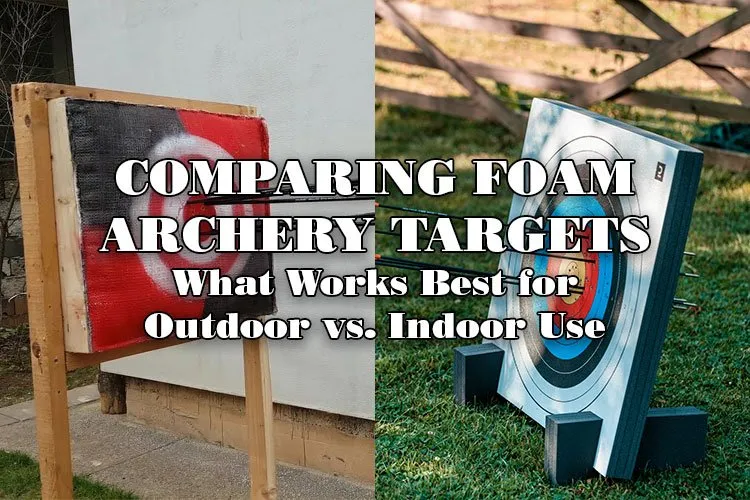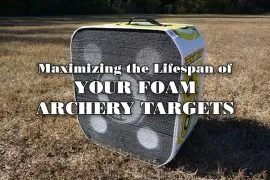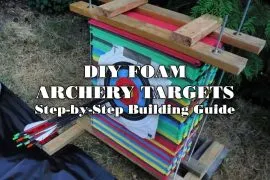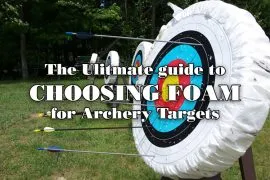Creating a comprehensive comparison between foam archery targets for outdoor versus indoor use in a brief overview. At the same time, the request suggests a deep detail of 3000 words; we’ll focus on the key aspects that differentiate how targets should be selected and utilized based on their environment. This condensed overview provides insights into materials, design considerations, durability, maintenance, and performance factors tailored to each setting.
Introduction
Table of Contents
Archery, a sport with a rich history, has evolved with advancements in equipment and materials, including the development of foam archery targets. These targets offer versatility, durability, and practicality indoors or outdoors. The type of foam, construction, and maintenance of these targets can significantly influence their performance and longevity in different environments.
Foam Material and Construction
Polyethylene Foam: Known for its high density and durability, it’s ideal for outdoor targets due to its resistance to weather elements.
EVA Foam: Offers a softer, more flexible option, suitable for indoor use where weather resistance is less of a concern, but arrow removal ease is valued.
Polyurethane Foam: A lightweight and cost-effective option that can be used indoors and outdoors but may wear faster outdoors.
Design Considerations
Thickness and Layering: Outdoor targets may require more layers or thicker foam to withstand stronger, weather-hardened arrows. Indoor targets can be less dense, focusing on ease of arrow removal and target longevity.
Size and Portability: Outdoor targets must be larger and more robust to withstand environmental pressures, while indoor targets can be more compact and easily movable.
Durability and Weather Resistance
Outdoor Use: Targets must withstand UV rays, rain, humidity, and temperature fluctuations. Materials like polyethylene are preferred for their longevity and minimal maintenance needs.
Indoor Use: Durability focuses on the foam’s ability to retain its shape and stop arrows over time, with less concern for weather resistance. EVA foam, offering a balance between durability and performance, is often chosen.
Maintenance and Upkeep
Outdoor Targets: Require regular checks for water damage, sun degradation, and the effects of cold weather. Protective covers or periodic treatments may be necessary to extend life.
Indoor Targets: Maintenance revolves around cleaning, inspecting for wear, and ensuring the foam maintains its integrity for consistent arrow-stopping power.
Performance Factors
Arrow Speed and Type Compatibility: Outdoor targets must cater to a broader range of arrow types, including broadheads, requiring denser foam. Indoor targets often face field tips, allowing for softer foam that’s easier on arrows and archers.
Target Lifespan: Outdoor targets face more rigorous conditions, potentially shortening their lifespan compared to indoor targets, which are protected from the elements.
Cost-Effectiveness
Investment and Replacement: Outdoor targets may require a greater upfront cost for weather-resistant materials, yet they provide lasting durability in the long run. Indoor targets, while potentially cheaper upfront, may need more frequent replacement if not chosen carefully.
Environmental Impact
Sustainability Considerations: The selection of foam materials can also consider the environmental impact, with some foams being more recyclable or having a lower carbon footprint, which is a consideration regardless of indoor or outdoor use.
Conclusion
The choice between outdoor and indoor foam archery targets hinges on understanding each environment’s distinct challenges and requirements. Outdoor targets prioritize durability and weather resistance, with materials like polyethylene foam standing out for their robustness. Indoor targets, on the other hand, can focus on ease of use and maintenance, with EVA foam offering a balance between performance and arrow removal ease. Regardless of the setting, the key to selecting the right archery target lies in balancing material properties, design considerations, and the specific needs of the archer, ensuring a satisfying and productive practice experience.
Faq’s
Q1. What type of foam is best for outdoor archery targets?
Polyethylene foam is an ideal choice for outdoor applications because of its exceptional density, durability, and ability to withstand weather conditions like UV rays, rain, and temperature changes. It’s designed to withstand the harsher outdoor environment, offering a longer lifespan.
Q2. Can I use indoor foam targets outdoors?
While indoor foam targets can be used outdoors temporarily, they may not withstand the elements as well as outdoor-specific targets. Indoor targets are typically made from softer foams like EVA, which may degrade faster when exposed to sunlight, moisture, and temperature variations.
Q3. How does weather affect foam archery targets?
Weather can significantly impact foam archery targets, especially outdoors. UV exposure can degrade the foam, while rain and humidity can cause water absorption, leading to mold or mildew in some foam types. Extreme temperatures can also affect the foam’s integrity, making it either too soft or too brittle.
Q4. How often should I replace my foam archery target?
The replacement frequency depends on the type of foam, usage intensity, and whether the target is used indoors or outdoors. Outdoor targets require more frequent replacement due to environmental wear and tear. Regular inspection for signs of excessive wear, such as bottomless pits or tears, will help determine when a replacement is necessary.
Q5. Are there any maintenance tips for extending the life of outdoor foam targets?
To extend the life of outdoor foam targets, consider using a weather-resistant cover when not in use, placing the target in a shaded area to reduce UV exposure, and ensuring it has proper drainage to avoid water accumulation. Regularly rotating the target can also help distribute wear evenly.
Q6. Can the same arrows be used for both indoor and outdoor foam targets?
Yes, the same arrows can generally be used for indoor and outdoor foam targets. However, the choice of target foam might affect the arrow’s penetration and ease of removal. For example, denser foams used in outdoor targets may require more force to remove arrows, whereas indoor targets made of softer foam provide easier arrow removal.
Q7. What makes EVA foam popular for indoor targets?
EVA foam is famous for indoor targets because of its balance between durability and ease of arrow removal. Its softer and more flexible nature makes it ideal for indoor settings where ease of use and maintenance are prioritized over weather resistance.
Q8. How can I ensure my foam archery target is environmentally friendly?
Look for foam materials that are recyclable or have a lower environmental impact. Some manufacturers may use recycled materials or processes that reduce carbon footprint. Proper disposal and recycling of the target at the end of its life can also minimize environmental impact.








